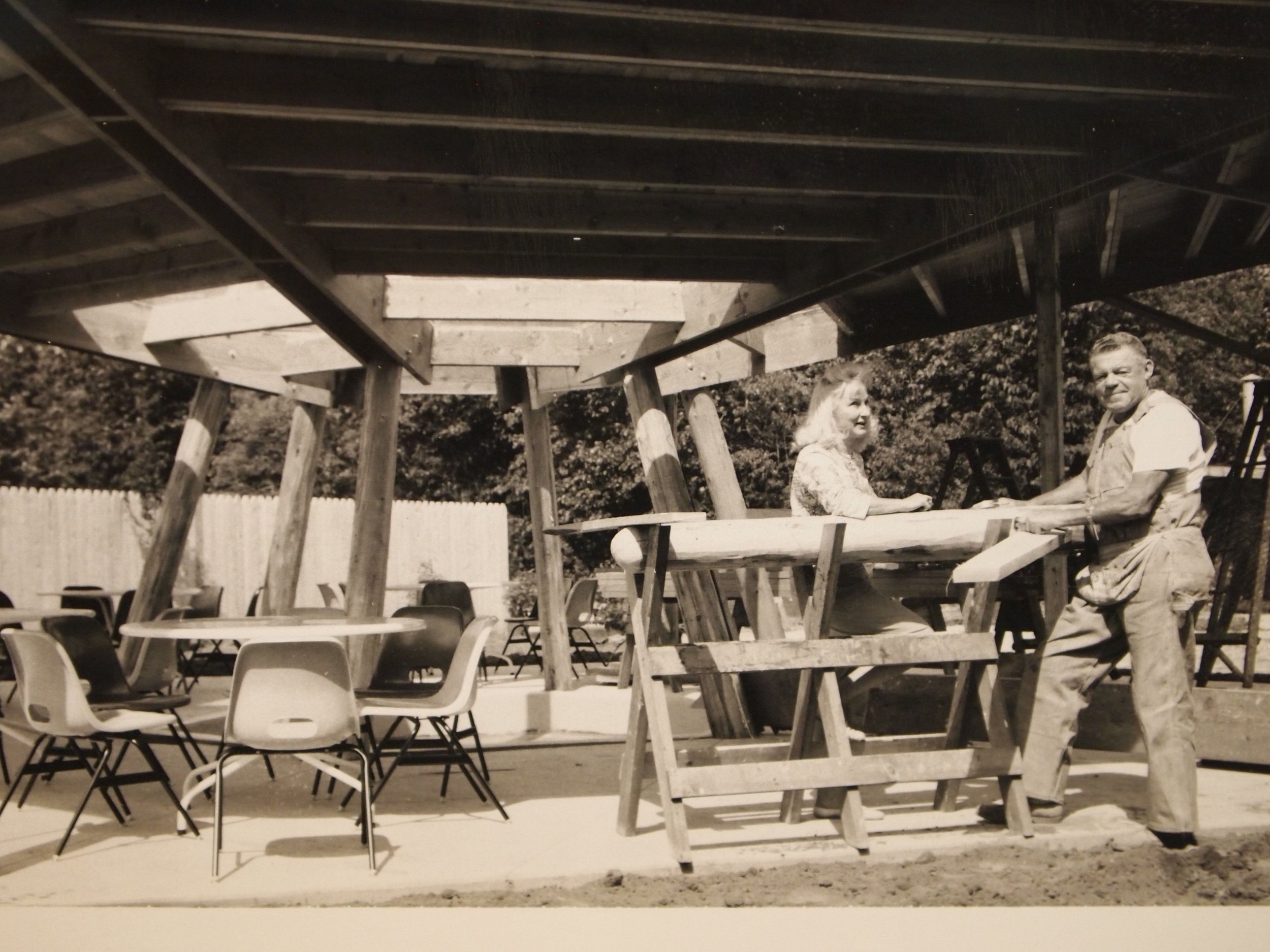
History of PenArt
Part of the Door County arts landscape for nearly 60 years — and counting.
Over 100 years ago, artists began to retreat to our peninsula, seeking inspiration — and finding it — in our landscape. They met and studied together informally — and from this fledgling art colony grew the desire to create a permanent place for artistic study, development, and appreciation in Door County. This is where our history begins.
1965
Peninsula School of Art is founded by Chicago-area filmmaker and artist Madeline Tripp Tourtelot. Tourtelot first visited Door County through fellow artists she met at the Art Institute of Chicago, and would go on to establish the Ephraim Art School in 1943, and the Door Harbor School of Art, which would later change its name to the Peninsula School of Art.
“There were children’s classes, photography workshops, pottery, jewelry, painting, drawing, sculpture and fabric printing classes. Instructors from around the country taught credit and non-credit courses...The atmosphere was free, serious, experimental and conducive to getting a lot of work done. The darkroom was used continuously. There were always lights coming from the jewelry room,… raku firings at night, sculpture being cast in the yard or a kiln being opened… and the continuous exchange of ideas and information between students, faculty and artists in residence… Madeline directed the school, set the tone and made it work…”
1972
The Studios at Peninsula School of Art provides summer residencies and 24/7 studio access for artists. One of these artists was renowned Wisconsin landscape painter Tom Uttech.
1978
Tourtelot closes The Studios and donates the studio buildings — and the three acres of land they occupied — to the Peninsula Arts Association (PAA), a nonprofit that provided financial support to many arts organizations that are still a critical part of Door County’s cultural landscape. PAA, which was active on the peninsula from 1937 to 2017, once served as the umbrella organization for PenArt.
1980
On July 1, 1980, the Peninsula School of Art officially reopened with a newly-appointed Executive Director—artist and educator Steve Wadzinski. Wadzinski taught art at UW-Green Bay in the 1980s and mentored a number of Door County artists, making him a natural fit for the role. PenArt’s class schedule consisted of two months of two-week summer sessions, and three hours of children’s classes were offered every Saturday morning.
Burning/Curbside, Diptych, by Steve Wadzinski, Oil on Canvas, ca. 1985
1992
With a dedicated board, corps of volunteers, and incredible instructor community, PenArt continued to thrive. One particular person who was especially instrumental to PenArt was Betsy Guenzel, herself an art student as well as PenArt board chair and tireless volunteer. She and her husband Paul, along with other members of the PAA’s Art School Committee, were instrumental in PenArt becoming an independent nonprofit organization—establishing our excellence as a fine arts institution.
1996
PenArt’s growth signaled the need for more classroom space and year-round arts instruction. Through hard work, generous donors, and the help of our dedicated donors, the dream of a year-round school and exhibition space became a reality. The exhibition space was named the Guenzel Gallery in honor of Paul Guenzel — at the request of his wife, Betsy.
1999
After several years of fundraising, planning, and construction, our new year-round space and Guenzel Gallery were dedicated—and 12-month programming begins at PenArt.
2001
PenArt launches free community and public programs for school-age children and families. These Family Art Days are currently held once a month, September through May, for families with children ages 3-17 — and have grown to serve over 3,500 participants each year.
2006
PenArt purchases the five-acre Potter’s Wheel Gallery property from Door County potter Abe Cohn and his wife Ginka. With an additional 2.5 acre parcel from Madeline Tourtelot’s heirs, the campus swells to 10 total acres, expanding the future possibilities of the School.
2007
Honoring the history of open-air painting and creating on the peninsula, PenArt hosts the first Door County Plein Air Festival. 35 nationally-recognized painters are invited to take part in the inaugural festival, and 15 years later, the event has grown to be the largest outdoor painting event in the Midwest, and one of the top plein air events in the country.
2018
With a vision of wanting to inspire creative growth for the next generation—and recognizing we’ve outgrown the studio and gallery space we opened in 1999, PenArt launches the Door to Creativity campaign to reinvent and revitalize our campus. The upgraded campus will serve as a platform for artists of all ages, dramatically improving our ability to offer artistic and educational programming and further providing a welcoming, inclusive setting for the celebration of creative expression within the vibrant Door County community.
2021
At the beginning of the year, Phase 1 of the Door to Creativity construction is started, and the new and updated spaces are opened in mid-June. The completed projects include a new adult painting and drawing studio, four new youth studios, and a great lawn/outdoor classroom and meeting space. Upgrades to our existing facilities, such as new siding, roofing, and energy-efficient doors and windows, are also completed, in addition to updated utilities and services.
2022
After 50 years, PenArt relaunches a formal Artist-in-Residence program. Designed to provide emerging, mid-career, and established visual artists with the resources and time to research, experiment, and expand their practices, the program offers three six-week sessions between the months of November and May to two artists at a time.













